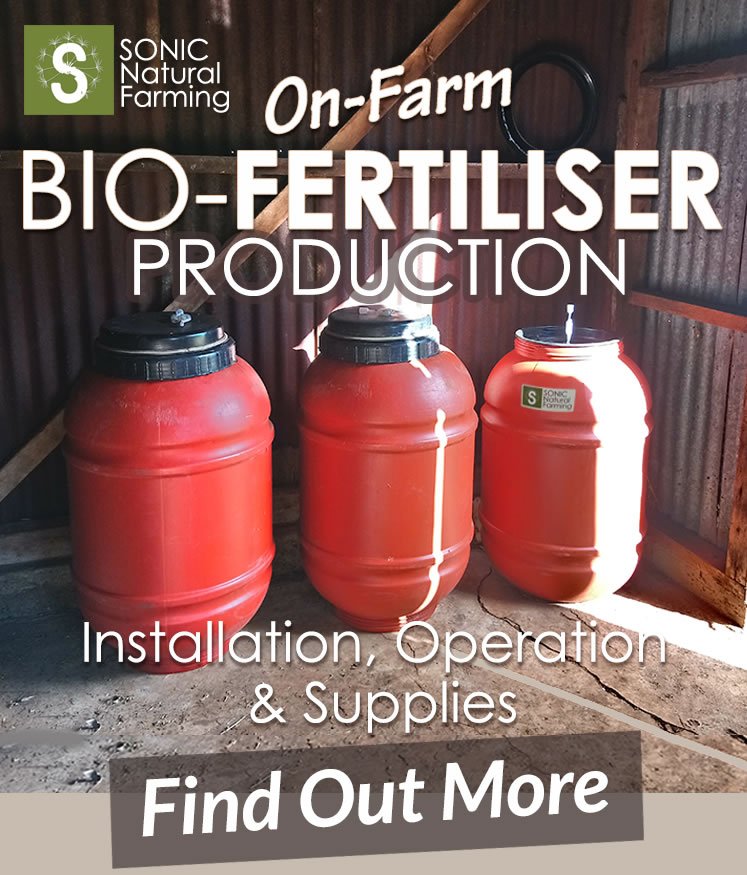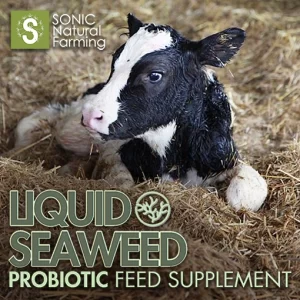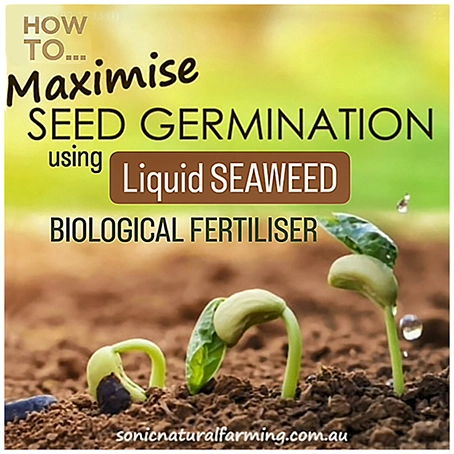If you’re looking to reduce costs on the farm and boost your soil health at the same time, then focusing on soil microbes might just be the answer you’ve been waiting for.
Soil microbes – those tiny, hardworking critters that live in the soil – are a farmer’s best mate when it comes to cutting down on the need for expensive inputs. By focusing on building up the biological activity in your soil, you’re not just improving the health of your land, you’re also setting yourself up for long-term savings, healthy crop yields, and better resilience against Australia’s tough climate.
Here’s a quick rundown on how soil microbes can save you time and money, while making your farm more sustainable.
1. Soil Microbes Improve Soil Fertility and Nutrient Cycling
Let’s start with the basics. Soil microbes are essential for nutrient cycling. In simpler terms, they help break down organic matter like plant debris, turning it into nutrients that your crops can use. This natural process makes your soil healthier and more fertile over time.
Instead of needing to buy pricey synthetic fertilisers, your soil’s microbial army will do the job for you. With a healthy balance of microbes, like bacteria, fungi, and earthworms, the soil becomes a nutrient powerhouse. Over time, you won’t have to rely on external inputs as much – saving you a good chunk of change.

2. Beneficial Microbes Reduce the Need for Chemical Use
If you’re using a lot of synthetic fertilisers and pesticides, it might be time to rethink your approach. These chemicals can have a significant impact on soil health, especially on the microbial communities that play such a crucial role in plant growth.
Healthy soil microbes are essential for breaking down organic matter, recycling nutrients, and helping plants absorb what they need to thrive. However, synthetic chemicals can impair the function of these microbes, making it harder for them to perform these vital tasks effectively.
When the balance of soil microbes is disrupted, it can lead to a less efficient nutrient cycle and weakened plant defenses. Healthy microbes can naturally suppress plant diseases and pests, reducing the need for expensive chemical pesticides.
By shifting to practices that support these natural processes, you can reduce chemical usage, improve soil health, and create a more eco-friendly and cost-effective farming system in the long term.
3. Microbes Improve Soil Structure and Water Retention
Now, anyone who’s farmed in Australia knows how critical water is – especially when the weather turns dry. Well, good news! A biologically rich soil structure helps improve water retention.
Healthy soil microbes help bind soil particles together, creating a better structure that allows water to infiltrate and stay where it’s needed most. In turn, this means you won’t need to irrigate as often, saving both water and energy.
Given how unpredictable the Aussie climate can be, building up soil biology to improve water-holding capacity is a savvy way to ensure your crops stay hydrated even during dry spells.
4. Soil Microbes Help Strengthen Crop Resilience
Australia is no stranger to extreme weather – floods, droughts, and heatwaves can make farming feel like a constant battle. But soil microbes can help make your land more resilient to these challenges.
When your soil is biologically active, plants can better cope with stresses like drought, high temperatures, or heavy rains. Microbes help plants absorb water and nutrients more effectively, making them more drought-tolerant and better able to bounce back from stress.
In a place like Australia, where the weather can be all over the shop, this resilience is crucial for protecting your crops and your bottom line.

5. Microbially Rich Soil Contributes to Long-Term Savings and Sustainability
One of the biggest wins when focusing on soil biology is the long-term reduction in input costs. By building up your soil’s microbial activity, you can gradually reduce your reliance on expensive fertilisers, pesticides, and other external inputs.
Healthier soils mean less need for costly soil amendments, which in turn cuts down on expenses. Plus, healthy soils improve crop rotations and increase the efficiency of land use, so you’re getting more out of each paddock without extra effort. Over time, these savings add up, and you’ll be running a more sustainable, cost-effective operation.
6. Soil Microbes Contribute to Carbon Sequestration
Another massive bonus of focusing on soil microbes is the opportunity to sequester carbon in your soil. As microbes break down organic matter, they lock carbon away in the soil.
In fact, healthier soils can store significant amounts of carbon, which can benefit the environment and potentially earn you carbon credits under various government or marketplace programs. These credits can provide an additional income stream, offering another incentive to invest in soil health and biology.
With the Australian government placing more emphasis on sustainability, this could be a great opportunity to tap into new revenue options while helping the planet.
The Bottom Line: Nature’s Power, Aussie Farmer’s Advantage
The bottom line is this – soil microbes are a natural, cost-effective solution to many of the challenges Aussie farmers face. From reducing your dependency on chemicals and synthetic fertilisers to improving water retention and boosting your land’s resilience, soil microbes offer a host of benefits that help you cut costs.
By building up the biological activity in your soil, you’re not just saving money now – you’re investing in a healthier, more productive farm for the future.
So, if you’re keen to give it a crack and reduce those farm input costs, it might be time to turn to nature’s solution. Start focusing on soil biology, let the microbes do the work, and watch your farm thrive, both financially and productively.
Practical Steps for Farmers
Some of the most common steps used today by Australian farmers to build soil health;
- Cover Cropping – Growing cover crops (like legumes or grasses) can help feed soil microbes, prevent erosion, and add organic matter to the soil.
- Diversity – Planting a diverse range of crops and vegetation above the ground encourages a wider variety of soil microbes below the surface, creating a more resilient and fertile soil ecosystem.
- Composting – Adding compost to the soil introduces beneficial microorganisms and organic matter, which supports microbial health.
- Reduced Tillage – Minimising tillage helps preserve the natural structure of the soil and protects the habitat of beneficial soil organisms.
- Integrating Livestock – Grazing livestock can help with nutrient cycling and organic matter distribution across the farm, creating a symbiotic relationship between plants and animals.
- Bio-Stimulants – Using biological products (like mycorrhizal fungi or beneficial bacteria) can jumpstart the biological activity in the soil, especially in soils that have been degraded by previous heavy use of chemicals.
- Biological Fertilisers – Using biological fertilisers such as liquid fish and seaweed, help to activate and feed soil microbes encouraging them to proliferate.
Conclusion
Focusing on building soil biology is a holistic approach that can provide significant cost-saving benefits for Australian farmers. By fostering healthy, biologically active soils, farmers can reduce their reliance on external inputs, improve water efficiency, increase yields, and build long-term farm resilience.
While it requires an initial investment of time and effort to transition toward a more biologically focused farming system, the return on investment can be substantial in terms of both cost savings and environmental sustainability.
Disclaimer:
The information in this article is for general guidance and not professional advice—always consider your individual circumstances or consult with a professional before making decisions. For more details, please review our full Disclaimer.
Unlock the potential of your land by tailoring organic fertilisers to suit your unique Aussie soil type. The right organic fertilisers—like compost, biochar, or liquid fish—can not only boost crop resilience, but also improve soil fertility and sustainability over time.
Discover some of the most popular natural organic fertilisers you can tailor to your soil. Download our ‘Organic Fertilisers by Soil Type – Quick Guide’ to get started!
At SONIC Natural Farming, we’re committed to helping Aussie farmers easily access organic inputs, at the same time as saving big!
SONIC On-Farm Production Services minimise transportation costs. Plus, by reusing storage containers on the farm, farmers can reduce plastic waste and packaging expenses, saving even more.
But that’s not all—SONIC Production and Training Programs empower farmers to produce their own Biological Solutions using the most eco-friendly and cost-effective supply option available in Australia today.

Want to see how we can help you beat the high cost of fertiliser?
















